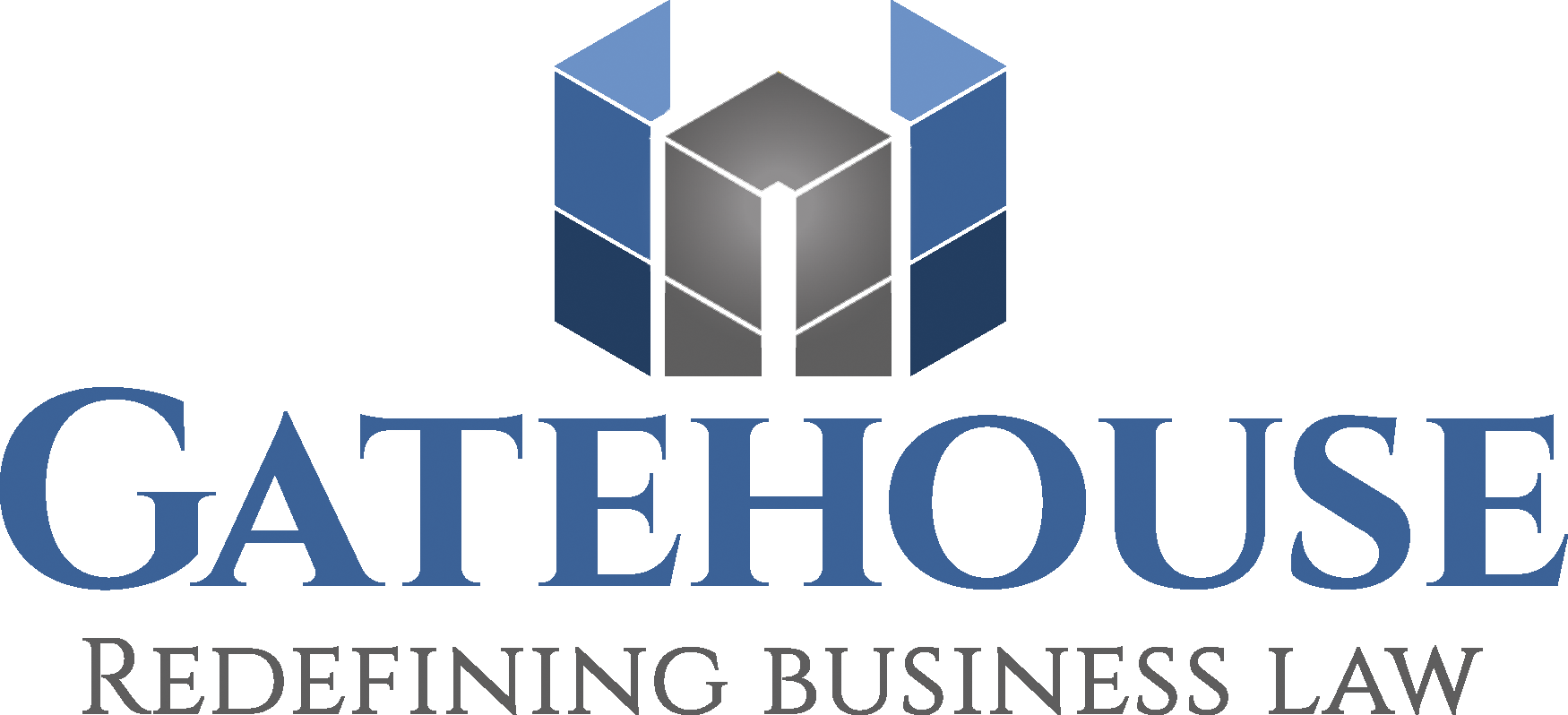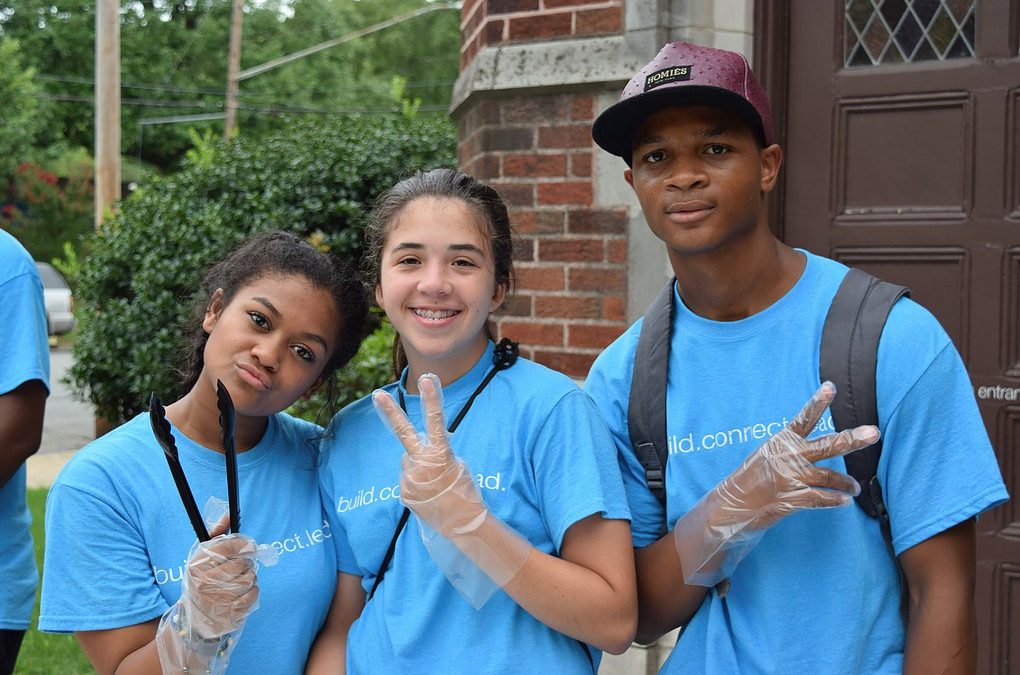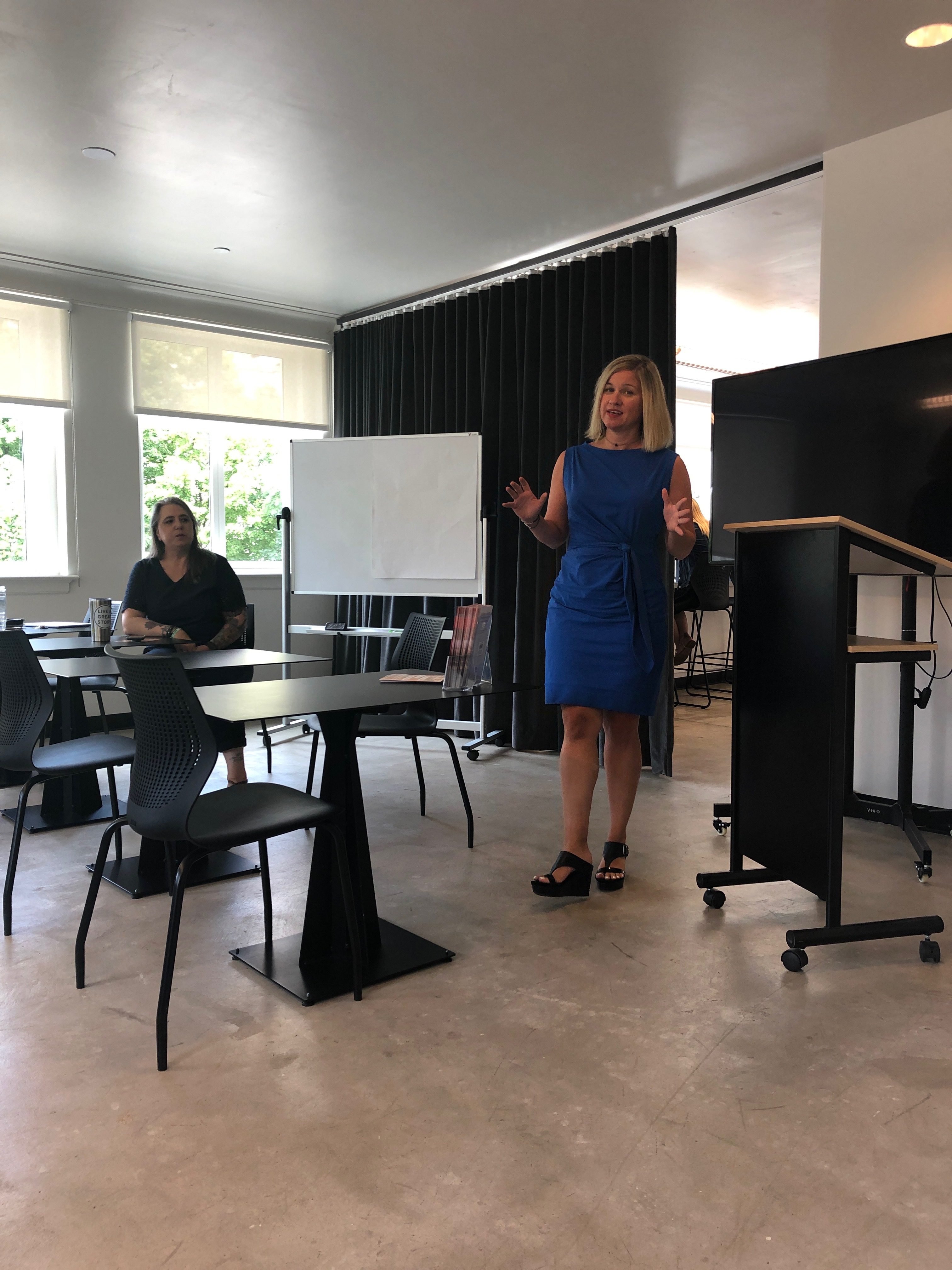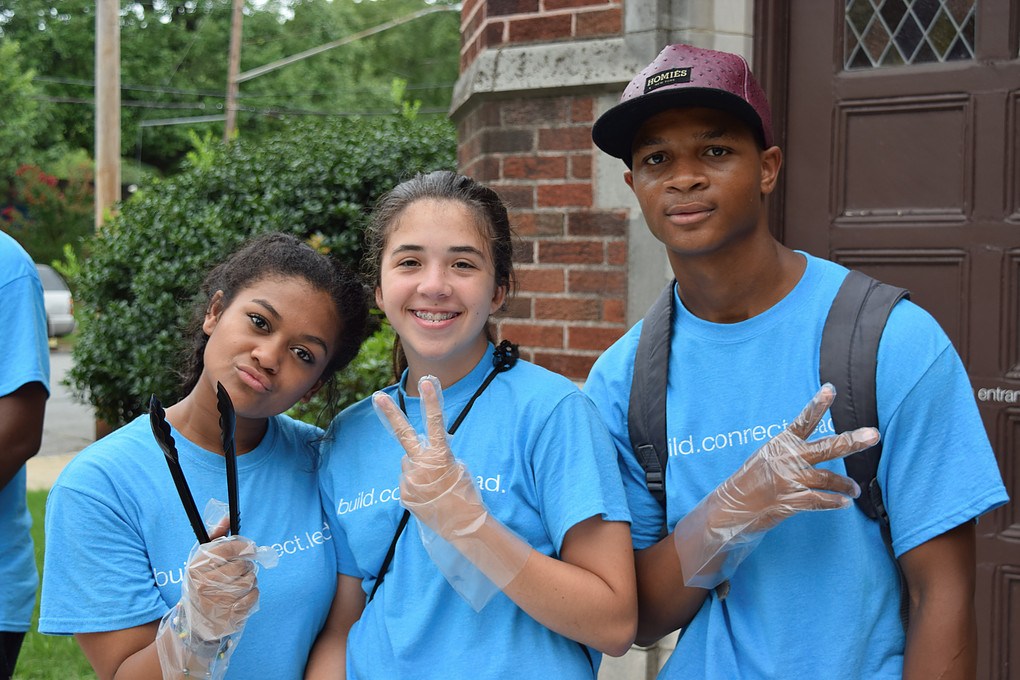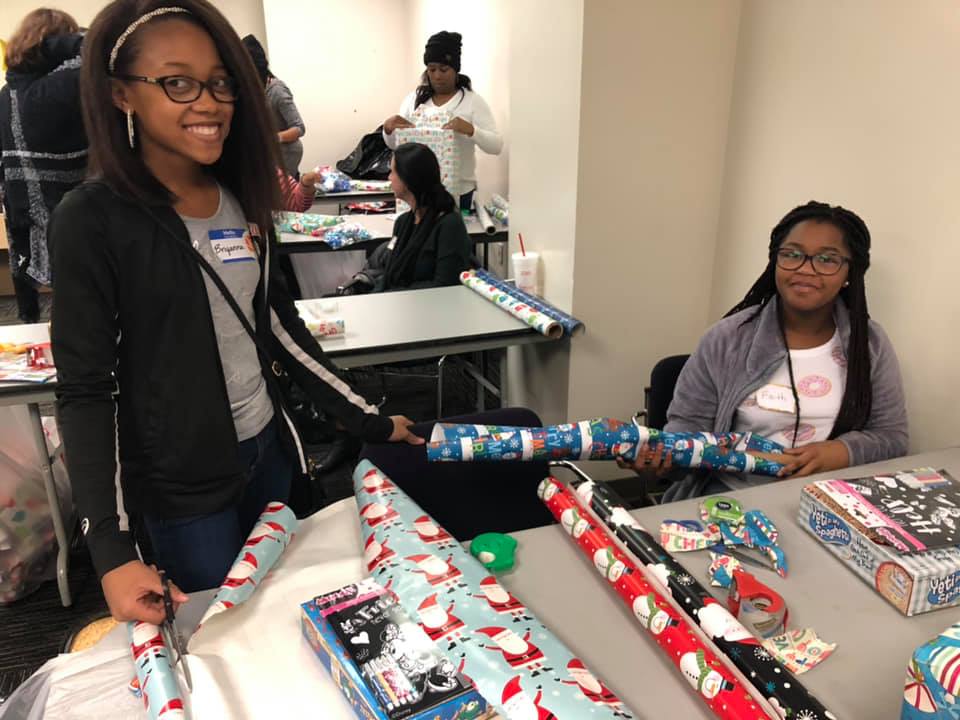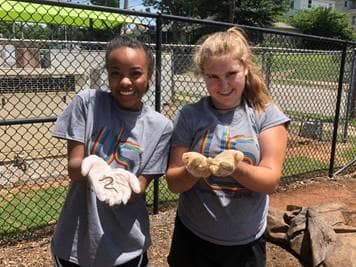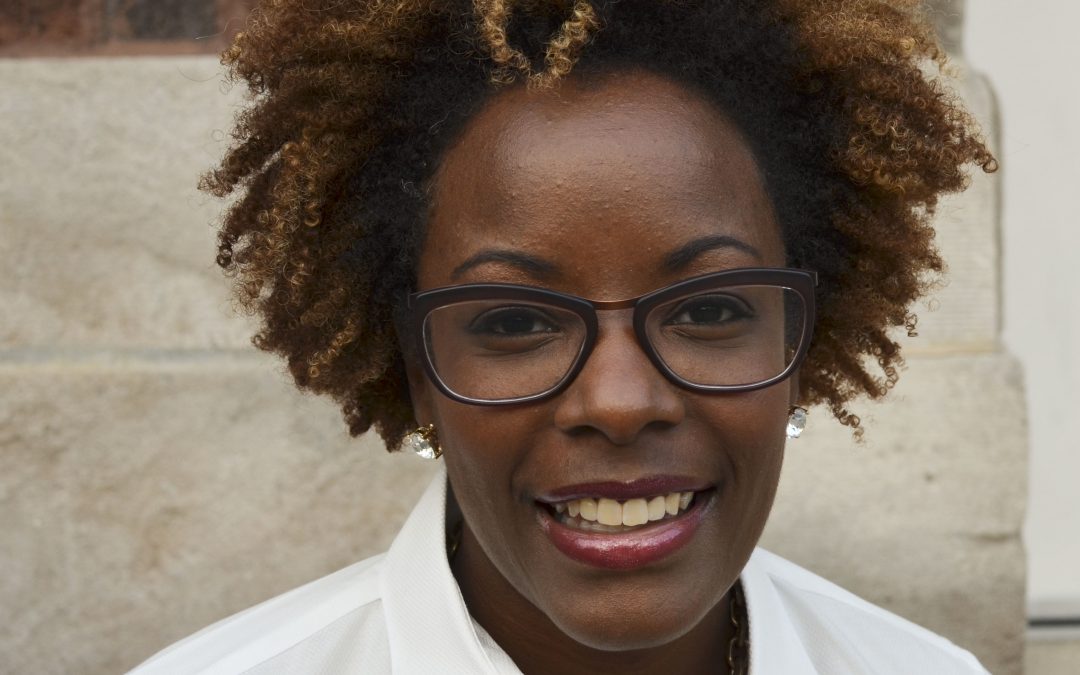
Lunch & Learn |
Autumn Foster of Quire Consulting taught Forge’s most recent Lunch & Learn about survey design. We know we need data in order to get better. So we craft surveys and program evaluations and give them to our customers. We get them back, share the results at a team meeting and return to business as usual. For this lunch and learn Autumn talked about a better way to use customer input to improve your business.
Why do we use surveys in research?
Surveys help us gather information from a large number of people in order to make decisions that impact our business.

First step: Ask yourself “What information do I want to know?”
Different Kinds of Information:
- Attitudes: what people say they want
- Beliefs: what people think is true
- Behavior: what people do (descriptive)
- Attributes: what people are
Here are different question structures you can use:
- Open-ended
- Never use an open-ended question if a close-ended question will do!
- People have to think harder about an open-ended question so choose wisely.
- Close-ended with ordered choices
- Close-ended with unordered choices
- Partially close-ended
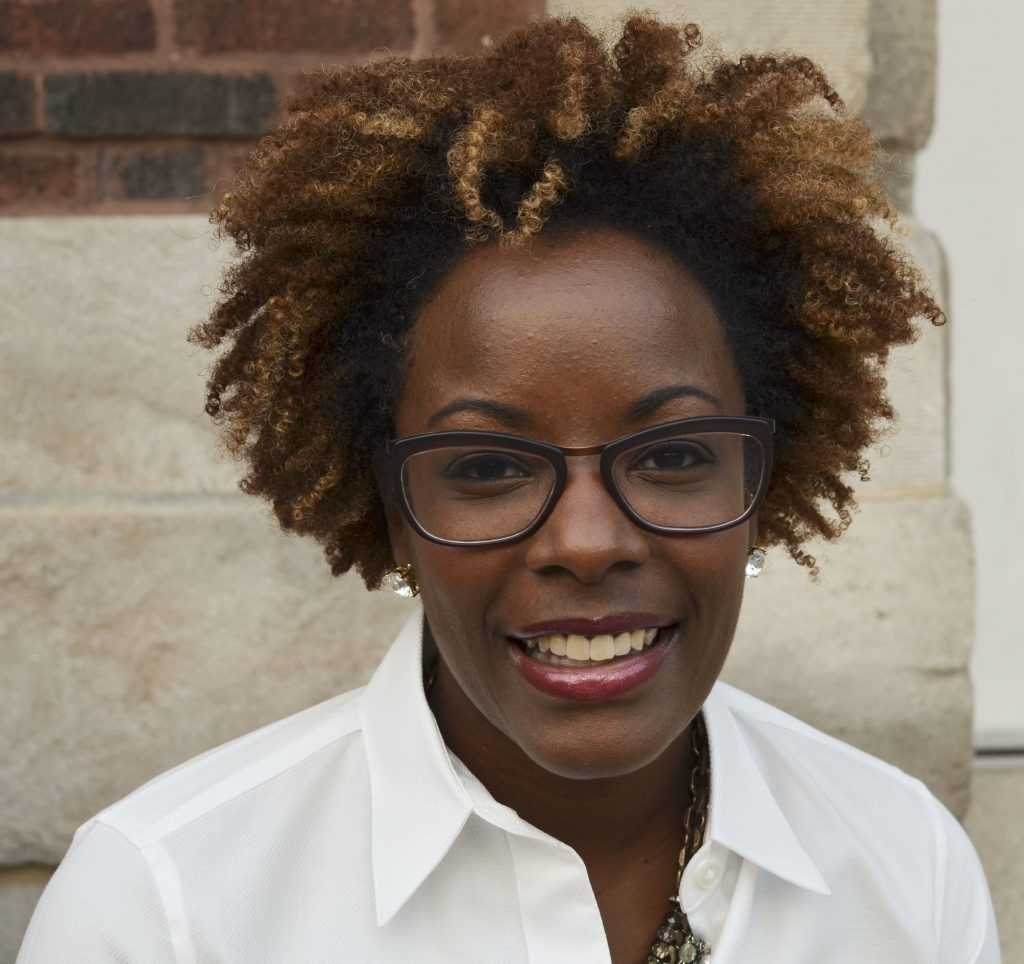
Pay attention to your wording! Ask yourself these questions:
- Will the wording be understood?
- Are the questions too vague/precise?
- Is the question too demanding?
- Is the question objectionable?
Make sure you know your goal! What are you hoping to learn from this survey? Who are you trying to reach?
Define your audience:
- Start with what you know
- Identify your assumptions
- Go beyond your network
- Consider your strategic goals
How will your team process and use the data?
After going through the work of gathering data, you don’t want to throw the information in a binder- never to be seen again. So ask yourself how your team will process the data you receive. When processing the data, think about these things: 1. Know your audience (user vs. spectator) 2. Know what they need to know 3. Make it accessible and durable
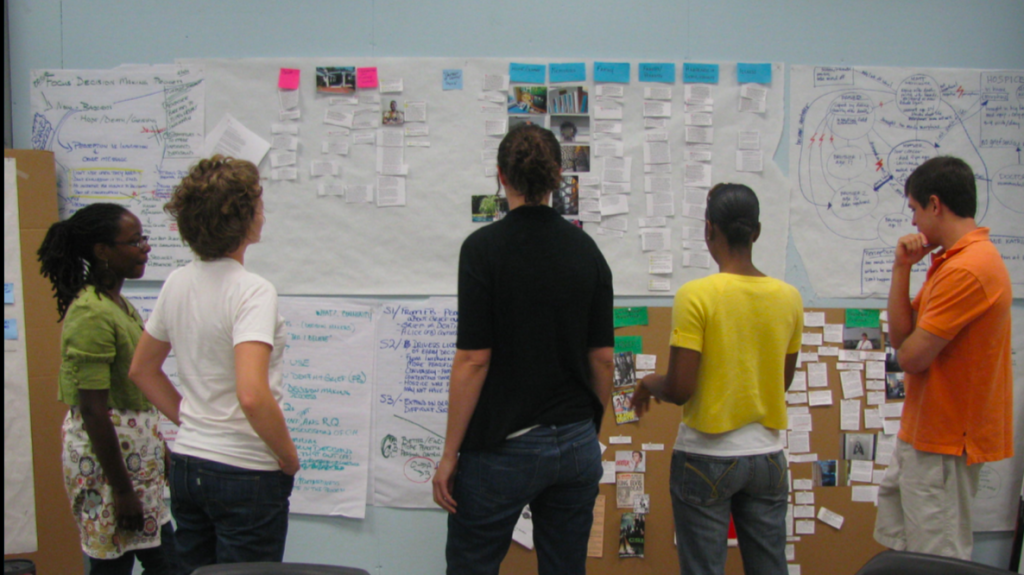
Autumn and her team processing data a few years back!
Think about the impact of the survey: What does this mean for your business?
Let the data lead by:
- doing more research
- identifying opportunity areas
- setting goals tied to your learning
- establishing a plan of action
Surveys take work but they can certainly pay off if you gather valuable information about your audience. Make sure you establish a plan of action to use the information you’ve gathered! Thank you Autumn for sharing with us! Check out Quire Consulting if you haven’t already. Feel free to contact Autumn at autumn@quireconsulting.com.
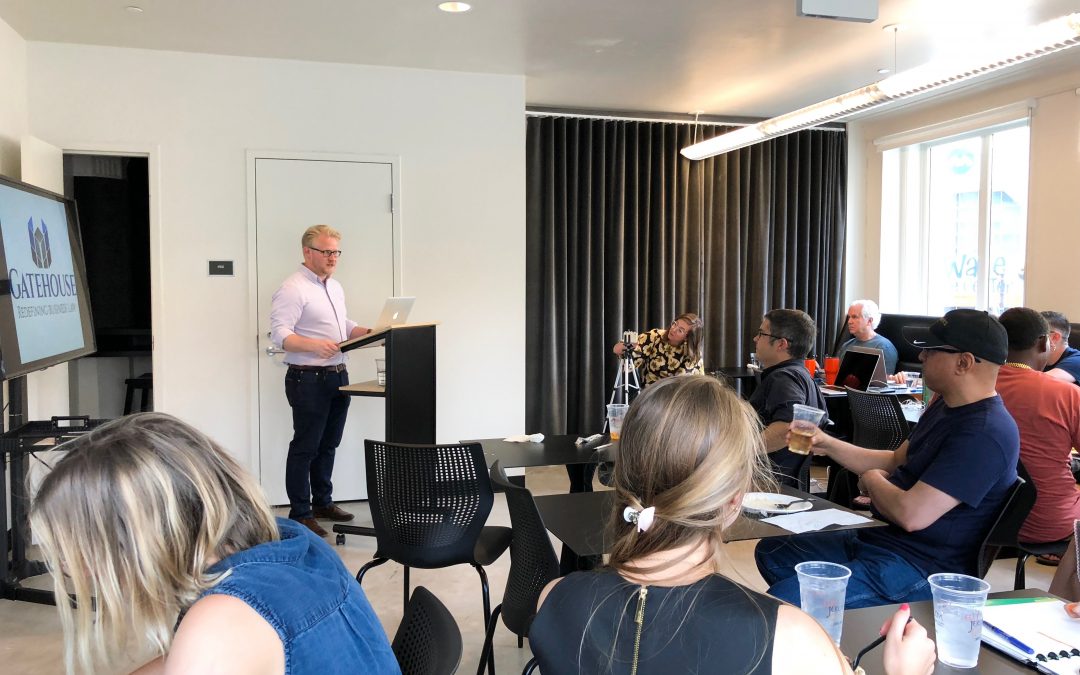
Lunch & Learn |
Many entrepreneurs and small business owners don’t know the differences between contractors and employees. This decision is so important when hiring someone to join your small business so Josh Andrews of Gatehouse Law came to Forge to teach us more on this subject!
Contractors:
- They are independent workers, they dictate when and how they work
- Contractors often use their own equipment
- Typically this is a worker that could run a small business performing the work they do for you for multiple companies
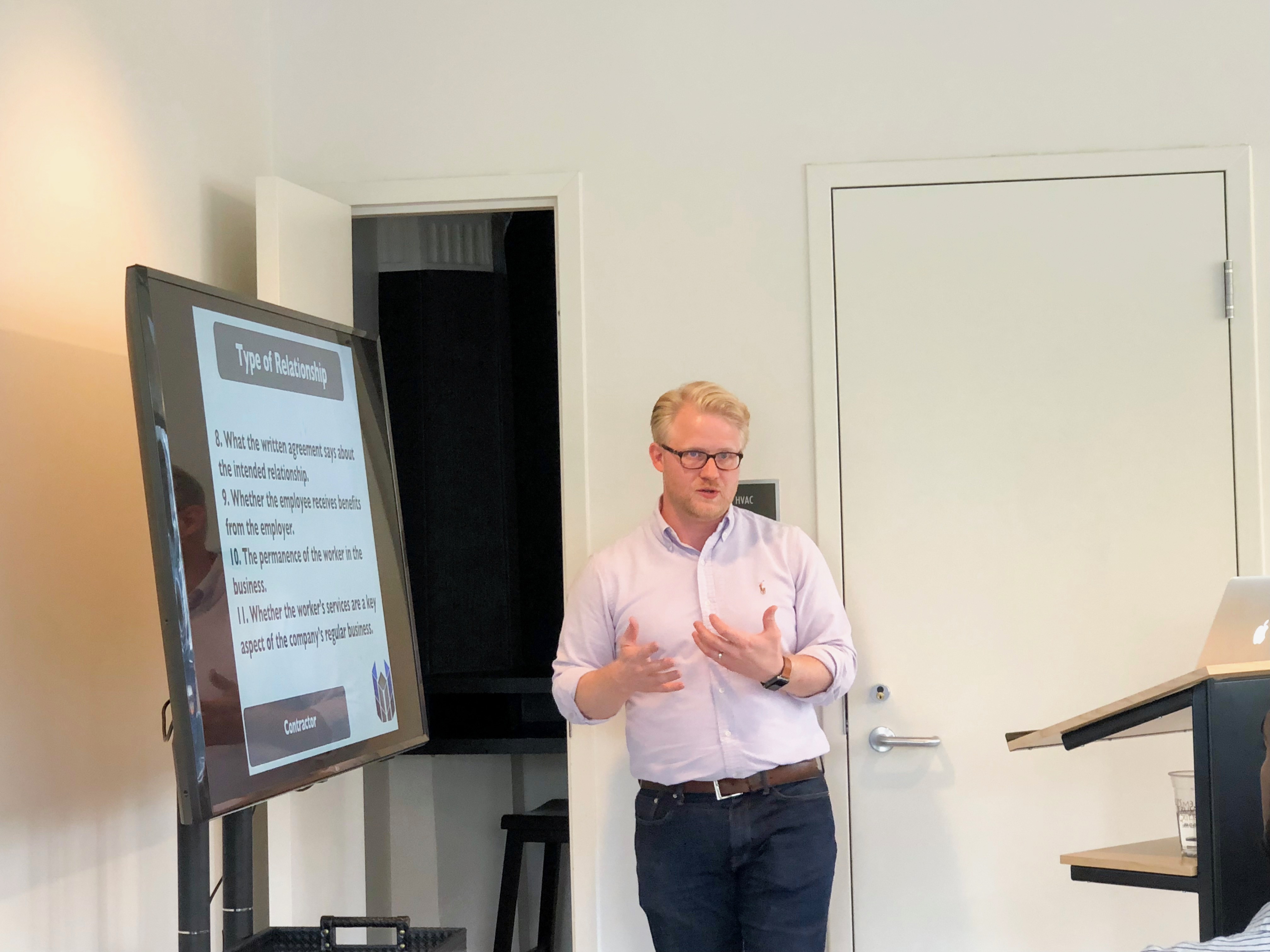
Here’s the IRS Test you may need look over:
- Behavioral control
- This is what you tell the contractor about how, when, where or with whom to work
- It’s also how exactly you train the worker
- Financial control
- Reimbursement policy
- Work investment
- Are worker’s services available to others who need it?
- How is the worker paid?
- Can the worker make a profit or loss on the work?
- Type of Relationship
- What does your written agreement say about the intended relationship between you and the worker
- Does the employee receive benefits from you as the employer?
- The permanence of the worker in the business
- Is the worker’s services a key aspect of the company’s regular business?
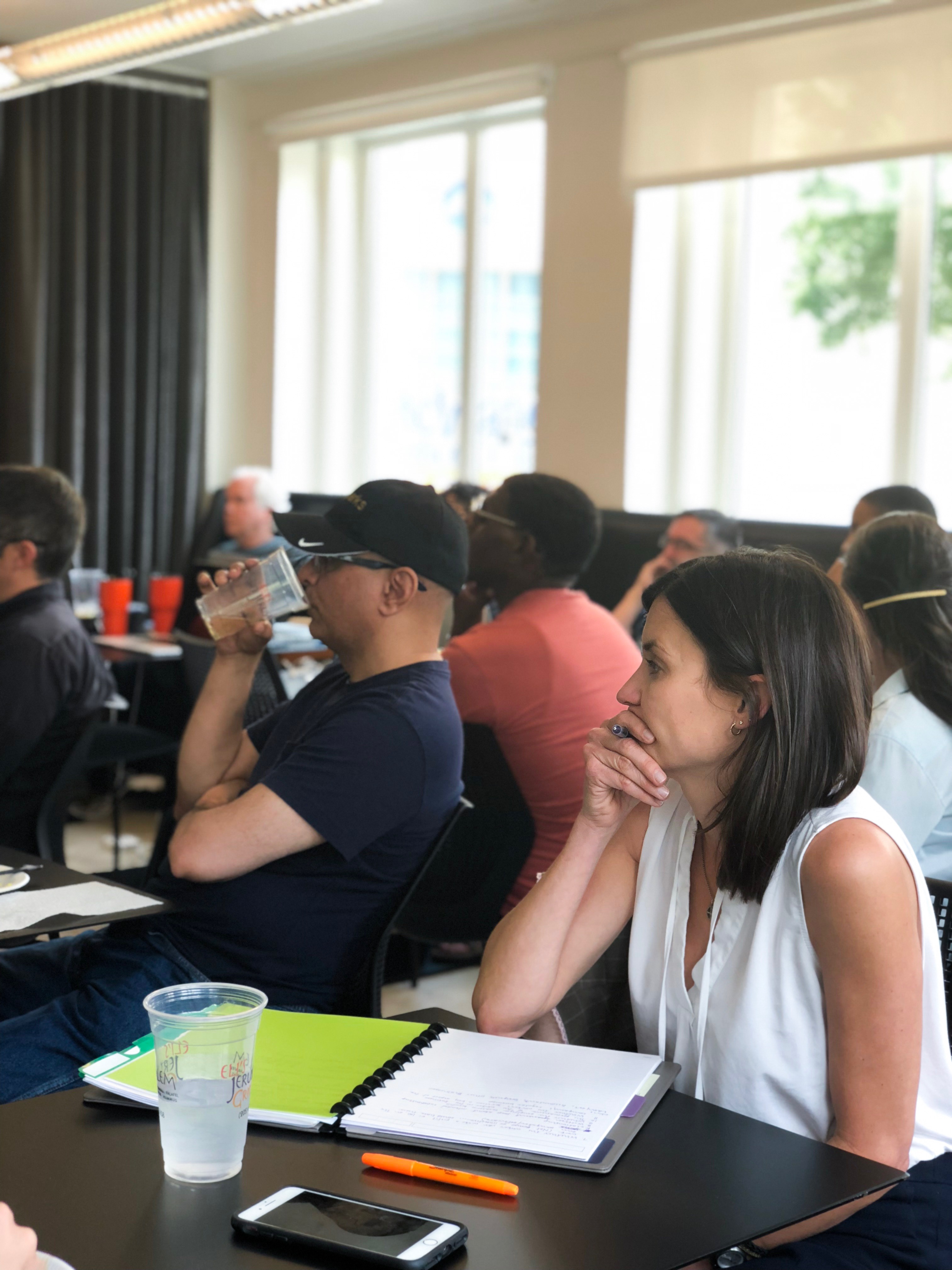
Who is a contractor?
- Lawyers
- Accountants
- Designers
- Other businesses
- Sales staff (sometimes!)
As the employer, you have a lot more control over employees rather than contractors.
When making this decision, ask yourself a few questions:
- What do you need?
- What do you want?
- How does it look?
We have to understand both options to make the right decision for your specific business! We’ve just hit the highlights for you but if you want to view the full Lunch & Learn, check it out here! Check Forge’s Facebook calendar for future educational events.
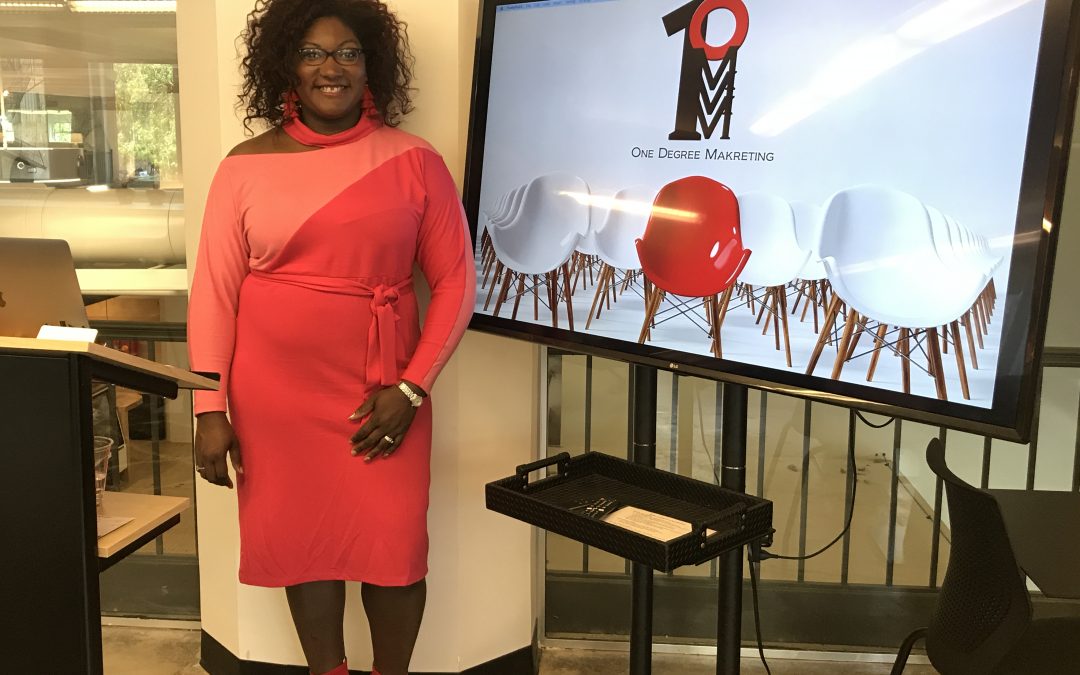
Lunch & Learn |
Social Media posting… We all know we need to be doing it. And so we post.
But is your posting effective?
Is anyone seeing your posts?
Is the audience you are reaching the audience that can actually be converted to customers?
There is so much more to posting on social media than just shooting a picture on your phone and then putting it on instagram with a catchy caption. That is, if you want social media to be a vehicle to grow your business (HINT HINT: as business owners this should be your goal!)
Jacqueline Jones of One Degree MMM shared with Forge the Must Do’s for creating a plan before you post anything on social media.

1. Who
Build a Customer Avatar!!
You must know everything you can know about about your customer. Everything…
Age. Gender. Family Life. Where they live. What they do for a living. When they drive to work. What they listen to while driving. How much they spend…
Gather as much data as you can. Then use that data to inform all decision making.
Do not assume that you are your target customer! Marketing can often break down when that happens. Look at your data, see who is buying your product or using your service. See who is spending the most with you and how often. This information is going to guide every decision you make for your social media and marketing strategy.
It is possible that you will have a few different avatars. Know them each and market to them each.

2. What
What is the goal you are trying to achieve with your marketing efforts. Pick a goal and then stick with it for a quarter so you can see realistic results. Now there is always the case where you determine a goal and realize quickly you need to change directions. But generally speaking, it is best practice to choose a goal, build your strategy and then give your efforts time to perform. When you do this, you get more QUALIFIED DATA about who your customer really is!
3. How
How are you going to get in touch with your customer? How are you going to get your information to your perfect customer. If you just put out a blanket post (on any platform), you will not be able to reach the people that you really want to reach. Each post must be intentional. Your tone and voice must reflect who you want to reach and why you want to reach them. Speaking of tone… always communicate on your posts the way that you would communicate in person.
4. Where
Which platform should you use? The best way to answer this question is to figure out which platforms your customers are on. And then kill it on those platforms! Don’t try to be everywhere, you simply cannot do. Or at least you cannot do it well.

As you are planning out your Social Media strategy, here are a few things that you should CHOOSE NOT to do:
- Choose Not To get caught up in frequency suggestions. Do not be lured in to believe you must follow all the advice out there. The best thing to do is be consistent. Consistency for you could mean once a week, once a day or five times a day. Determine the capacity that you have to create and post meaningful, strategic posts and then stick to it! When you are building your community on social platforms, this community is built on relationships. Relationships are trusted through consistency.
- Choose Not To create blanket content. Create content that speaks to your Avatar!
- Choose Not To be everywhere. Your customers are not everywhere, you should not be everywhere either.
- Choose Not To be fake. Do not try to be who you think people want you to be. They want you! Be you!
- Choose Not to be afraid to ask for help or guidance. As a business owner you cannot do it all. There is no shame in getting someone to help you with your Social Media Planning and Posting.
We are thankful for the work that Jacqueline is doing to help Small Business Owners grow! If you would like to contact Jacqueline to get more information or learn how she can help grow your business, you can email Jacqueline at info@onedegreemmm.com.

If you are interested in diving deeper into your business, Jacqueline is hosting Boiling Point: A Group Marketing Strategy Session, at Forge on March 11. Use the code APLAN to receive a $30 discount!
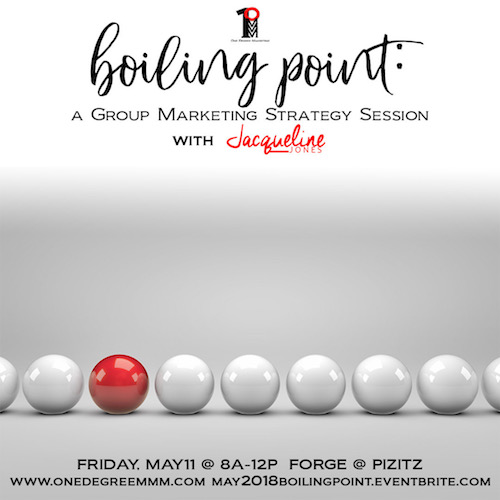
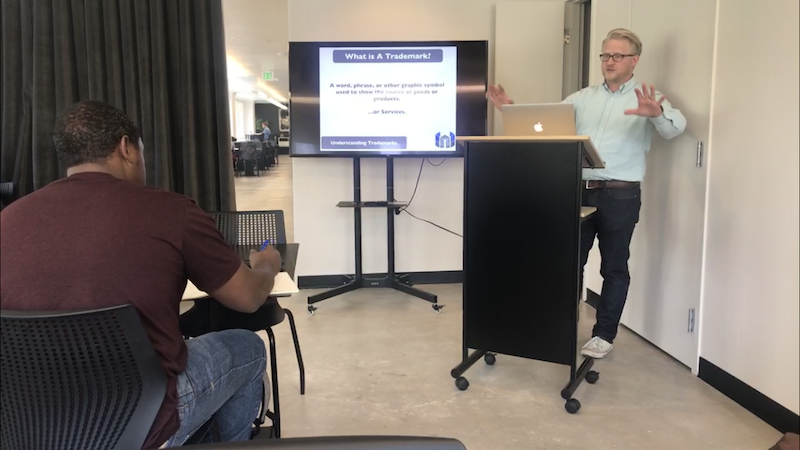
Lunch & Learn |
Josh Andrew with Gatehouse Law returned to Forge with a topic that is near and dear to all Entrepreneurs and Small Business owners – or at least it should be! What do you need to know about your business’s trademark? You have legally registered your business, isn’t that enough? Let’s dig a little deeper…
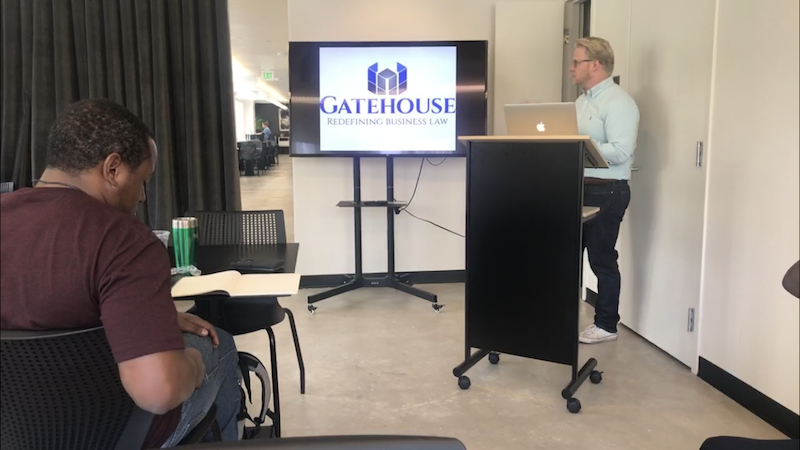
Step 1: Understanding Trademarks
What is a Trademark?
A trademark is a word, phrase or graphic symbol used to show the source of goods or products… or service!
Think of the most notable trademarks: Nike Swoosh, McDonald’s Golden Arches, UPS Brown Box (example of a service)
So, what is the difference between a Trademark and copyright? If you hired a designer to create your logo and they have a copyright for that image, do they own the trademark?
The short answer is no! The copyright protects the artwork or words. The trademark protects the business. So even if your logo has a copyright that you do not own, the trademark is yours!

Step 2: Protecting Trademarks
1. Your Trademark Cannot be “Merely Descriptive”
A merely descriptive mark is one that immediately conveys knowledge of a quality, feature, function or characteristic of an applicant’s goods or services. For example if a dry cleaners named their business “The Dry Cleaners,” they could not lay claim to that name being Trademarked. Anyone could use the same name because it is merely descriptive of the business that it represents.
2. Your Trademark Must have Distinction
It must be:
- Fanciful
- Arbitrary
- Suggestive
All three of these qualities can be legally protected.
3. Protecting Trademarks before you launch. This step is particularly important for those building a business, and not yet in operation. There are three ways to protect your business before you launch.
- Non-disclosure Act. Any time you enter into conversation with someone about your business, have them sign a non-disclosure act regarding the business knowledge shared during the meeting.
- File “Intent to Use.” This is a more costly option and only lasts six months. If you are not in business at the end of six months, but still want to protect the business, there must be another filing.
- Action. Do something with your mark. Setting up a website that collects email addresses is the simplest way to begin acting as a business before you are ready to launch.
Enforcing Trademarks
While ultimately your business needs to have the trademark legally protected, there are a few things that can protect the trademark while the business is growing.
1. Common Law Mark: Trademarks are protected in the immediate area that the business is operating. However this does not prevent your trademark in another part of the country from being used legally.
2. Business Name Registration
3. Notice – By using the trademark, your business trademark is protected (only in the area of operation)
4. Cease and Desist letters. It may seem like an extreme option. But it is the responsibility of the owner to protect the trademark immediately, otherwise the trademark is ineffective.
Thank you Gatehouse Law for teaching us all things Trademarks! We are thankful for firms like Gatehouse Law who serve entrepreneurs and Small Business owners teaching us the things we really need to be thinking about while building our business!
